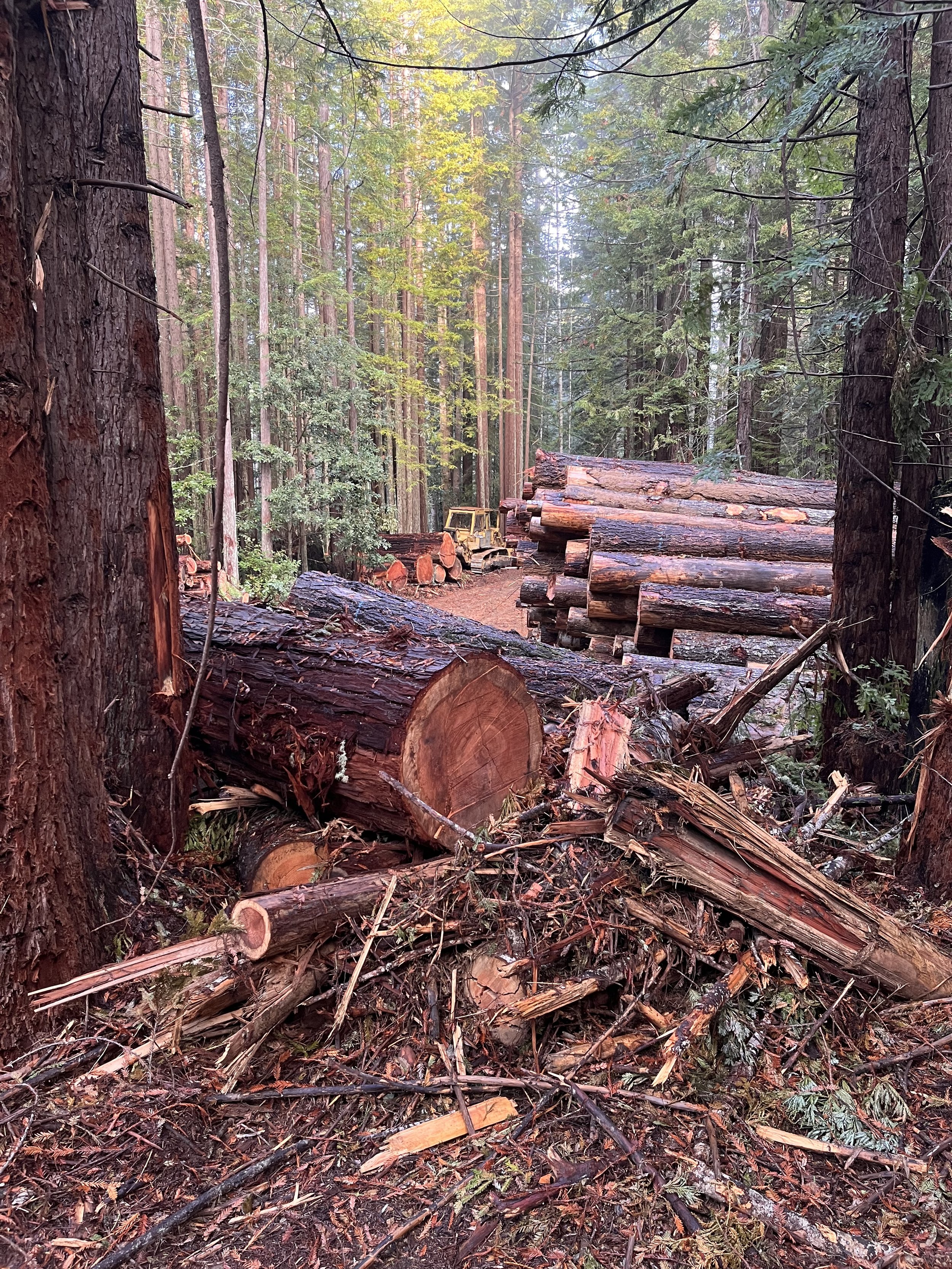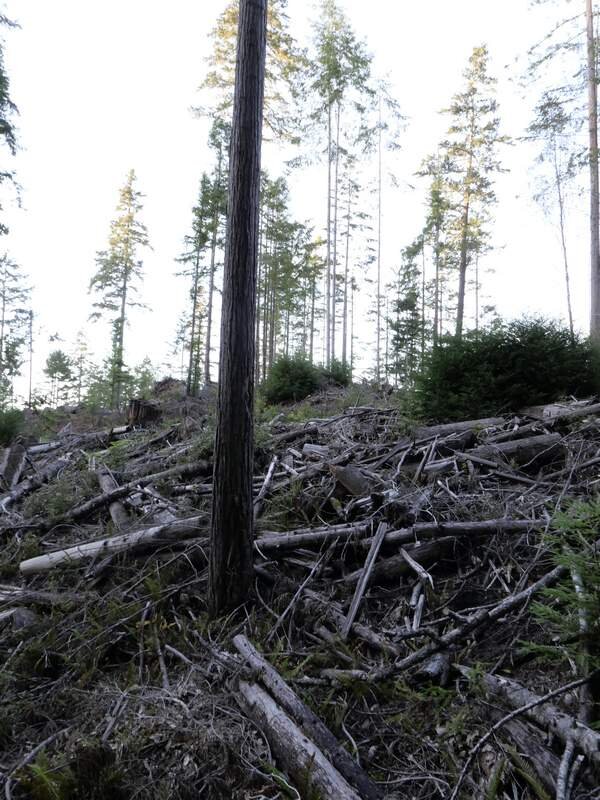An Egregious Betrayal of The Public Trust
Logging is a major source of CO2 emissions because less than half the wood in a tree is usable as lumber—not to mention the fossil fuel consumed by the operations and the associated trucking of logs. The rest is burned or quickly decays in a landfill. Typically up to 80% of stored carbon is released into the atmosphere in the short term. "Thinning" operations actually cause a large net decrease in forest carbon storage and a net increase in emissions. "Thinning" sounds benign, but such projects often kill and remove more than 70 percent of the trees in a given stand, including many old-growth trees, or very large second-growth up to 200 years old, as in the Red Tail timber harvest plan.



“Demonstration State Forests are required to balance periodic timber harvest with public trust resource values such as recreation, watershed protection, wildlife, range and forage, fisheries, and aesthetic enjoyment.”
—page 291, JDSF Management Plan, 2016



The state defines these as “…commercial timberland areas managed by professional foresters who conduct programs in timber management, recreation, demonstration, and investigation in conformance with detailed management plans,” (California Board of Forestry Policy 0351.1)



Old growth conifers with diameter over 48 inches (151 inches circumference) “will be retained in any prescription unless the tree presents a public safety issue…” page 105, JDSF Management Plan, 2016

Though Cal Fire claims to promote late successional forests, older Douglas firs and other less commercial conifers are routinely ‘culled’ and left lying, ostensibly for people to come and take away as firewood. The 60 to 120 year old trees pictured here were once rich wildlife habitat—essential anchors for the regeneration of the ecosystem—but were cut in the Summer of 2018.





JDSF is full of log decks, bulldozed flats covered with rotting Douglas fir, surrounded by fields of flammable invasive grasses and brooms, leftovers from a misguided attempt to convert a mixed conifer forest into a redwood plantation. Hare Creek Watershed.






Forestlands provide 90% of the water used in California….
—California Department of Forestry and Fire Protection Director 1991-1999 Richard A. Wilson
A lack of resources is no excuse for a lack of oversight
—from comments submitted to Cal Fire by Friends of the Gualala River
It is taught in forestry programs that nature cannot manage itself in the absence of low-intensity wildfire. Logging is promoted as a way to reduce fire danger, but on-the-ground observations contradict this. Economically driven timber harvest does not in any way replicate the effects of natural burning, but instead leaves the forest drier, hotter, more open to gusty winds, with compacted slash-strewn soils that have been spilled on by gas and oil from heavy machinery and chainsaws, invaded by highly-flammable, short-lived non-native plants—in all ways more vulnerable to flames.
Before and after satellite images of timber harvest off of Caspar Road 409, years 2017 & 2019. Note clear cuts within 100 yards of residences and a school, and also the obvious dryness of the area after the fact.


The world, we are told, was made especially for man — a presumption not supported by all the facts.
Photos by
Art Mielke
Chad Swimmer
Chet Jamgochian
Samuel Goldberger
and Myke Berna











